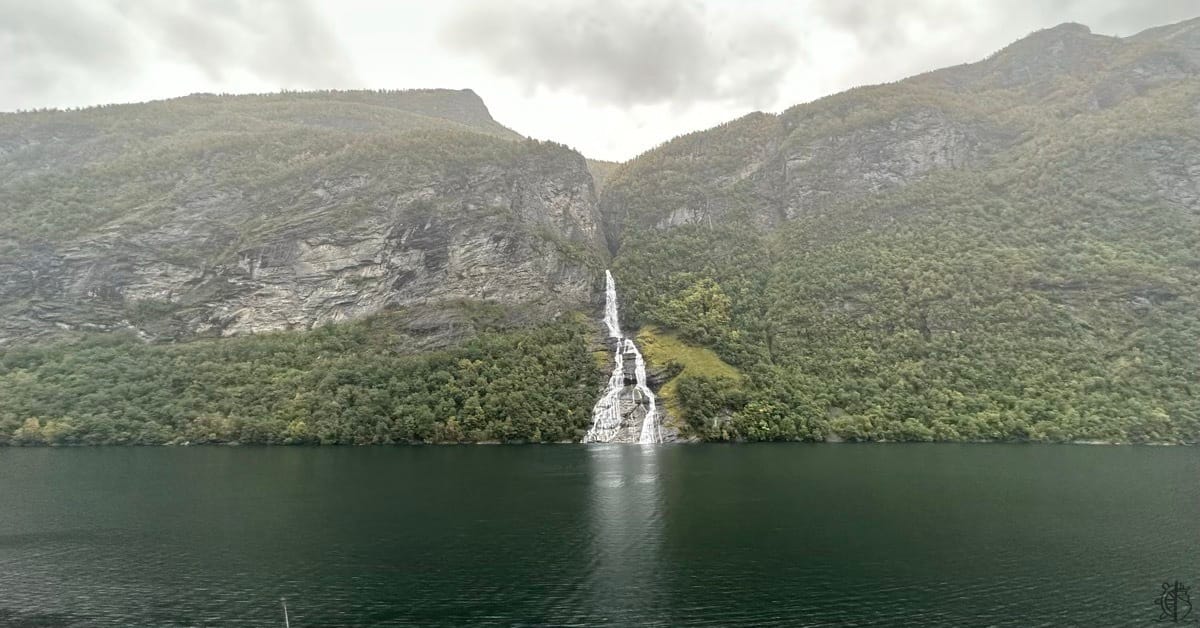Norway mandates zero emissions for cruise ships by 2032

Norway is taking significant measures to ensure the protection of its iconic World Heritage fjords by introducing new regulations aimed at zero-emission cruise ships. Starting January 1, 2026, these rules will first target vessels under 10,000 gross tons, which include ferry and tourist ships. This initiative is a part of Norway’s broader commitment to reducing the environmental impact of maritime activities, especially cruise tourism. Larger cruise ships are expected to comply with these requirements by 2032, aiming to use alternative fuels and connect to shore power where available.
Andreas Bjelland Eriksen, Norway’s climate and environment minister, emphasized that the primary goal of this initiative is to preserve the spectacular scenery of the fjords and promote sustainable tourism in the area. This move is crucial for the world-renowned fjords, which are often considered some of the most beautiful landscapes and are key tourist attractions.
The Impact of Cruise Ships on the Environment
The introduction of zero-emission rules comes as an effort to mitigate the environmental challenges posed by the cruise industry, which is often criticized for its contribution to greenhouse gas emissions and pollution in sensitive coastal regions. Particularly in UNESCO World Heritage sites, there is a heightened awareness and scrutiny regarding the ecological impact of heavy maritime traffic.
Norway's Western fjords, including significant areas such as Nærøyfjord, Aurlandsfjord, Geirangerfjord, Sunnylvsfjord, and Tafjord, are examples of regions that are protected under international treaties. Given that these locations attract millions of tourists, maintaining their environmental integrity is vital for sustainable tourism.
Government Support for Zero-Emission Goals
The Norwegian government is backing this zero-emission initiative not only with regulations but also with financial support to develop the necessary infrastructure. For instance, funding has been allocated for the establishment of shore power facilities in popular cruise ports such as Flåm. This will enable large vessels to connect to the local power grid while docked, thereby lessening their overall emissions and environmental footprint.
The Norwegian Parliament has expressed strong support for this gradual rollout of zero-emission mandates, particularly for larger vessels that will be affected later in the timeline. Currently, the technology needed for these changes is still being developed, reflecting the complexities and challenges of transitioning an entire industry toward zero-emission standards.
Norway's Growing Popularity as a Cruise Destination
The influx in tourism is heavily influenced by the arrival of larger cruise ships, often exceeding capacities of 5,000 passengers from major lines like Royal Caribbean and MSC Cruises. This trend is particularly prevalent during peak summer months when ports become inundated with vacationers drawn to Norway's picturesque landscapes.
The Role of Notable Ports
Norway offers a multitude of over 100 ports, yet only 10 of them accommodated more than 200,000 passengers in 2023, with Oslo and Bergen leading the charge. Bergen serves as a primary gateway to the fjords, allowing easy access to the most sought-after natural wonders.
Scheduled cruise itineraries also reflect the increase in maritime traffic, as evidenced by the diverse lineup awaiting passengers in Bergen, which includes ships from various leading cruise lines. The impressive scale of these vessels illustrates the growing capacity and demand for cruising in Norwegian waters.
The Future of Zero-Emission Cruise Ships
Looking ahead, the Cruise Lines International Association (CLIA) envisions a future where all its members operate with zero emissions by 2050, 18 years after Norway's proposed regulations take effect. This ambition aligns closely with the European Union's Green Deal, which sets the stage for wider adoption of sustainable practices across the continent.
As part of this initiative, EU's Fit for 55 program mandates that major ports within its jurisdiction must be equipped with shoreside electricity by 2030, setting an essential precedent for further regulations that may impact the cruise industry globally.
Innovation in Maritime Technology
Currently, only Hurtigruten, a Norwegian-based cruise line, is progressing swiftly toward net-zero cruise operations. The company plans to launch a vessel in 2030, aimed specifically at providing a net-zero cruise experience along Norway’s beautiful coastlines.
Such advancements in ship technology are pivotal as they represent the industry's response to growing environmental concerns. Implementing cleaner fuels and energy-efficient systems will bolster future cruising possibilities without compromising the integrity of Norway’s natural wonders.
Conclusion
Norway’s commitment to introducing zero-emission cruise ship regulations is a critical step in mitigating the environmental impact of the cruise industry. With increased tourist numbers and a recognized need for sustainable practices, these measures will ensure that the country's fjords remain vibrant, beautiful, and accessible for generations to come. As cruise lines begin to innovate and adapt to these changes, the future of maritime tourism in this region looks promising.
FAQs about Zero-Emission Cruise Ships
1. What are zero-emission cruise ships?
Zero-emission cruise ships are vessels that produce no greenhouse gas emissions while operating. This is achieved through using alternative fuels and technologies such as battery power, biofuels, or connecting to shore power.
2. When will the zero-emission rules come into effect in Norway?
Norway's zero-emission regulations will begin on January 1, 2026, targeting smaller vessels first, with larger ships required to comply by 2032.
3. How will these regulations affect the cruise industry?
The regulations will drive significant changes in ship design, fuel use, and operational practices. Cruise lines will need to invest in cleaner technologies and infrastructure to meet the new requirements.
4. What is the impact of cruise ships on Norway's environment?
Cruise ships contribute to greenhouse gas emissions, pollution, and other environmental impacts in sensitive regions like the fjords, making these regulations necessary for preserving natural heritage sites.
5. Are other countries implementing similar regulations?
Yes, various countries and regions are adopting stricter environmental regulations for maritime activities as part of broader efforts to combat climate change and promote sustainable tourism.




